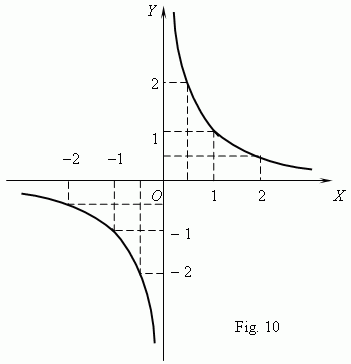Here a few good things to remember:
These expressions are usually written in terms of an x, y, or z.
The a cannot be 0.
The equation tht makes a parabola is y = a(x - h)2 + k where (h, k) is the vertex of the parabola.(fig. 2,3) In both forms, a determines the size and direction of the parabola.  The larger the absolute value of a, the steeper (or thinner) the parabola is, since the value of y is increased more quickly. All parabolas are actually similar in a geometric sense, just as all circles and squares are similar figures, with apparent size determined by the constant a.
The larger the absolute value of a, the steeper (or thinner) the parabola is, since the value of y is increased more quickly. All parabolas are actually similar in a geometric sense, just as all circles and squares are similar figures, with apparent size determined by the constant a.
 The larger the absolute value of a, the steeper (or thinner) the parabola is, since the value of y is increased more quickly. All parabolas are actually similar in a geometric sense, just as all circles and squares are similar figures, with apparent size determined by the constant a.
The larger the absolute value of a, the steeper (or thinner) the parabola is, since the value of y is increased more quickly. All parabolas are actually similar in a geometric sense, just as all circles and squares are similar figures, with apparent size determined by the constant a.If a is positive, the parabola opens upward, if negative, the parabola opens downward.
THE CIRCLE
A circle is the locus of all points, in a plane that is a fixed distance from a fixed point, called the center.
The fixed distance spoken of here is the radius of the circle.
The equation of a circle with its center at the origin is
where (x,y) is a point on the circle and r is the radius (r replaces d in the standard distance formula). Then
or

The other form of guadratic is a hyperbola. A hyperbola is a plane curve having two branches, formed by the intersection of a plane with both halves of a right circular cone at an angle parallel to the axis of the cone. It is the locus of points for which the difference of the distances from two given points is a constant. the equation is f(x) = 1/x

No comments:
Post a Comment